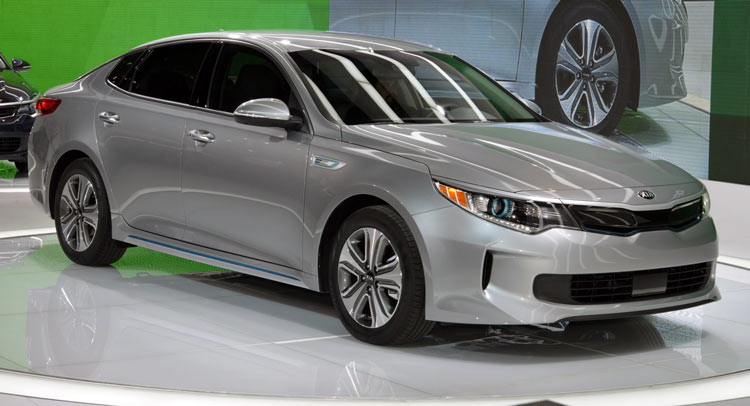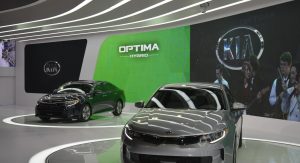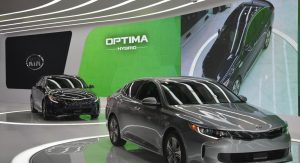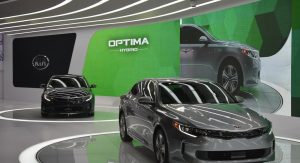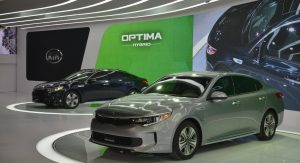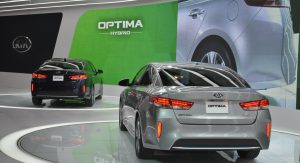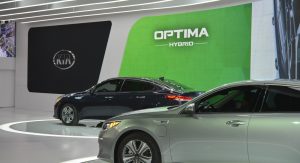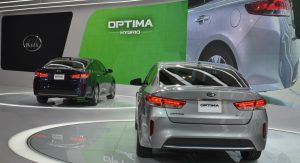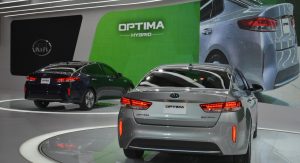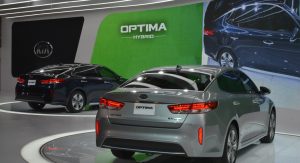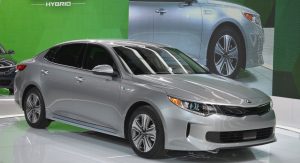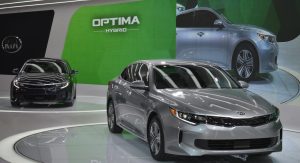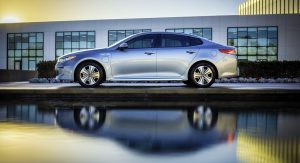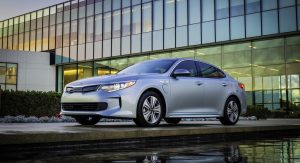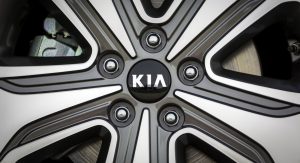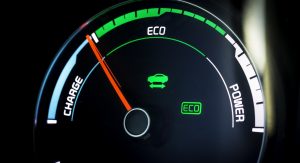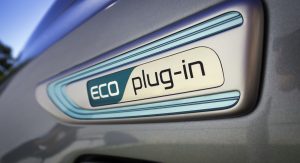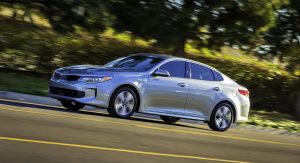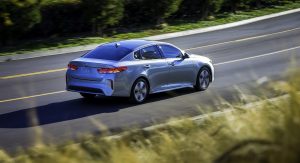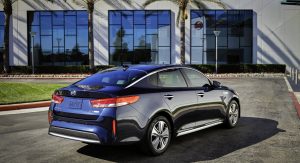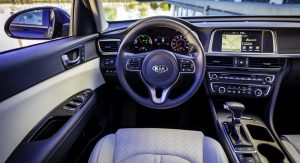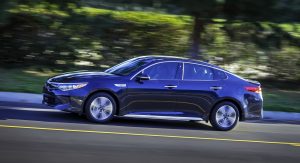Just as Kia’s 2017 Optima PHEV is making its global debut at the Chicago Auto Show, the new HEV (Hybrid) model is being unveiled simultaneously.
These two cars, along with the new 2017 Niro Hybrid Utility Vehicle (HUV) are being introduced under the Kia Motors EcoDynamics environmentally friendly sub-brand.
Where the Optima PHEV features a more powerful hybrid engine, a smarter telematics system, exterior design enhancements and a more refined interior, the Hybrid model boasts a 10% increase in fuel economy and seeks to offer the same “premium driving experience” that the fourth-generation Optima sedan is already claiming in the public’s eye.
Now, just so there’s no misunderstanding, we’re talking about two separate vehicles here. Both hybrids, yet only one of them comes with a charging port. Since we’re on the topic, the PHEV model can achieve a full charge in less than three hours via a 240V (Level 2) charger, and less than nine hours if you’re using a 120V (Level 1) charger.
Kia’s product planning VP Orth Hedrick stated that “As part of our bold initiative to increase fuel efficiency by 25 percent across the entire Kia model line-up by 2020, a plug-in hybrid was a critical addition to our offering. The Optima HEV adds hybrid efficiency to the standout styling and vehicle dynamics of our all-new Optima, and the PHEV takes things one step further with all-electric range that is among the best in the segment.”
Both the PHEV and the HEV version have a drag coefficient of 0.24 Cd, which is said to be the lowest of the segment, yet tied with that of the Tesla Model S. Both models come with active grilles, which automatically open and close at high and low speeds, while other styling differences (compared to the regular car) include model-specific front air curtain, beveled rear bumper, a new rear diffuser designed to streamline airflow and a more aerodynamic wheel design. They also have LED lighting, yet differ in the sense that the PHEV model comes with an ‘Eco Plug-In’ badge, whereas the Hybrid has an ‘EcoHybrid’ badge.
In terms of performance, the Hybrid model now uses a more efficient 2.0-liter GDI four cylinder unit, rated at 154 HP, coupled with a hybrid starter generator and a 6-speed transmission. There’s also a 38 kW electric motor and clutch replacing the old torque converted, therefor providing better off-the-line acceleration.
The total power output of the Optima Hybrid is estimated at 193 HP, achieved around the 6,000rpm mark. The electric motor makes use of a more lightweight high-density lithium-polymer battery pack, featuring a 13% increase in capacity, now reaching 1.62 kWh. This revised battery configuration has allowed Optima designers to integrate 60/40 split-folding rear seats, which is always a plus for hybrid owners looking for an extremely practical saloon.
The PHEV version on the other hand features a more powerful electric motor, rated at 50 kW, allowing for greater all-electric capability. The engine however remains the same 154 HP 2.0-liter GDI unit found in the Hybrid.
As for driving range, you can drive for about 600 miles (965 km) in the Optima PHEV, depending of course on your choice of modes. There’s the all-Electric Mode (city driving), Hybrid Mode (highway) and Charging Mode, which increases energy direction to the battery while the car is at high speeds.
Both cars come with the all-new Eco-DAS (Driver Assistance System) which features Kia’s first application of Coasting Guide – meant to maximize fuel economy by informing the driver on when it’s best to coast and brake, via an icon in the Instrument Panel which offers visual and audible alerts.
Inside, the HEV and PHEV come with Autonomous Emergency Braking, Blind Spot Detection, Advanced Smart Cruise Control, Lane Departure Warning System, Front Collision Warning System and a 10-speaker Harman/Kardon QuantumLogic premium surround audio system, which also features a 630-watt digital amplifier – just in case you’d rather listen to some good music instead of traffic alerts.
In terms of connectivity, Optima PHEV drivers will be able to use exclusive EV charging features, such as the possibility to locate charging stations, check the vehicle’s charge status and even schedule charge events.



